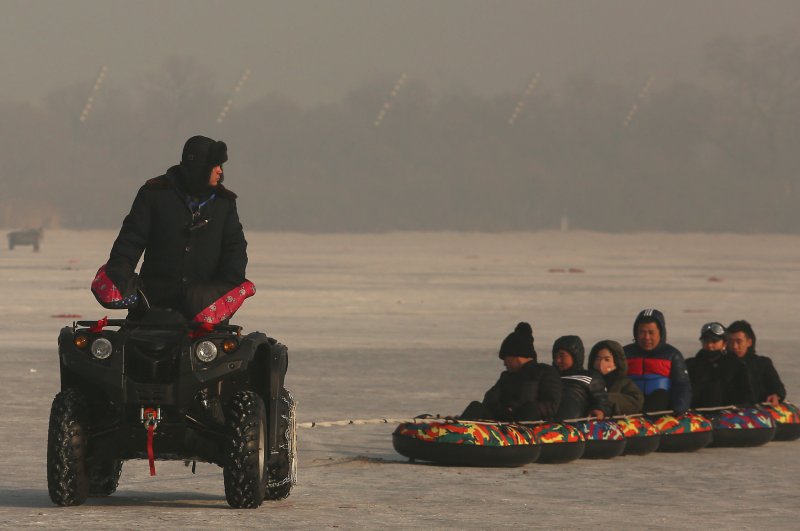The Chinese city of Harbin is stepping up coronavirus checks amid a second wave of infections, according to local authorities. File Photo by Stephen Shaver/UPI |
License Photo
April 15 (UPI) -- Chinese provinces bordering Russia remain wary of a possible second wave of novel coronavirus infections, as Moscow confirmed more than 24,000 cases on Wednesday.
China's northeastern Heilongjiang Province has become the new battleground in China's efforts against COVID-19, following the initial Chinese outbreak in Wuhan in January.
All schools in the province have postponed reopening, according to local media and the province's official WeChat account.
The order to delay school reopening applies to eight cities in the province. The policy does not apply to high school seniors who began attending classes again on April 7. The order may also apply only to the Chinese equivalent of ninth-graders, who are to wait until April 24, when their classes are to reopen.
Temperature checks that may have been suspended in the northeastern city of Harbin have also resumed in residential areas, according to South Korean news agency Yonhap's China correspondents.
Heilongjiang Province reported 14 new cases of COVID-19 on Tuesday. All new cases are being attributed to sources originating from outside China. A total of 340 people confirmed for the virus in the province had contracted the disease overseas, according to provincial authorities.
Suifenhe city's customs office said the latest cases are partly the result of asymptomatic transmissions.
The second wave of infections in China following the 76-day lockdown of Wuhan comes at a time when scientists are learning more about COVID-19.
Researchers at Los Alamos National Laboratory in New Mexico say in a recent study published by the Centers for Disease Control and Prevention the disease may be twice as contagious than previously surmised.
Steven Sanche, Yen Ting Lin, Chonggang Xu, Ethan Romero-Severson, Nick Hengartner, and Ruian Ke say one person with COVID-19 could infect up to six other people, and not two or three, as suggested in a previous study.
"Results show that the doubling time early in the epidemic in Wuhan was 2.3-3.3 days," the researchers say.
The research challenges a previous report for the Chinese Center for Disease Control and Prevention that concluded each patient spread the infection on average to 2.2 other people.















